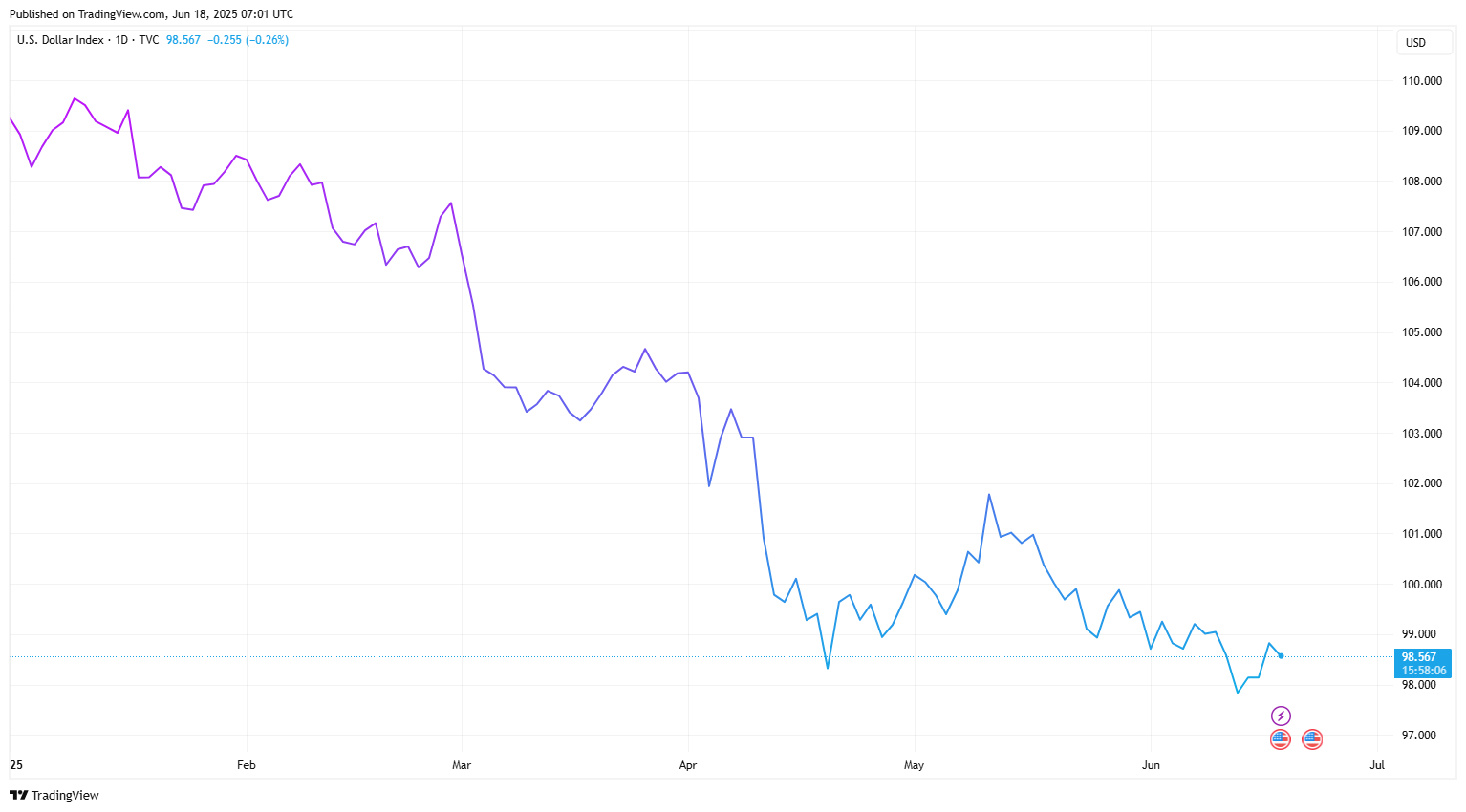Bank of America Warns of "Cracks" in Foreign Demand for U.S. Treasuries
- Tesla Stock Hits Record High as Robotaxi Tests Ignite Market. Why Is Goldman Sachs Pouring Cold Water on Tesla?
- Gold Price Hits New High: Has Bitcoin Fully Declined?
- Gold jumps above $4,440 as geopolitical flare, Fed cut bets mount
- U.S. November CPI: How Will Inflation Fluctuations Transmit to US Stocks? Tariffs Are the Key!
- US Q3 GDP Released, Will US Stocks See a "Santa Claus Rally"?【The week ahead】
- December Santa Claus Rally: New highs in sight for US and European stocks?

As the dollar continues to weaken, central banks worldwide continue to sell Treasuries.
Since late March 2025, central banks around the world have sold about $48 billion in Treasuries, while foreign investors have also reduced their holdings in the Fed's reverse repo facility by about $15 billion, according to a recent report from Bank of America.
Such outflows are unusual because central banks typically buy Treasuries when the dollar is weak. Bank of America analysts noted that the emergence of this situation may reflect the official sector's diversification trend to reduce dollar holdings, adding that they "remain worried about the outlook for foreign demand."
The dollar index (DXY), which measures the dollar against six major currencies, has fallen about 8% in 2025 and is close to a three-year low. Contrary to expectations, overseas buyers did not take advantage of the dollar's weakness to buy heavily to boost the U.S. bond market.

According to the New York Fed's custody data, as of the week of June 11, the average holdings of U.S. Treasuries by global central banks and other official institutions decreased by $17 billion, continuing the selling trend since the end of March, with a cumulative reduction of $48 billion.
In contrast, the demand for U.S. Treasuries in the first quarter of this year came almost entirely from brokers and foreign investors.
Bank of America analyst Meghan Swiber described this as a "worrying picture" in the report. She explained that the purchases by brokers and dealers are often just to fill the gap between bond supply and private investor demand, not real terminal demand. This means that once foreign demand continues to weaken, the stability of the U.S. Treasury market will face severe tests.
In recent months, Trump's trade and fiscal policies have continued to stir up financial markets, exacerbating speculation that overseas buyers will avoid U.S. assets - the so-called "Sell America" transaction. The weakness of the dollar is partly due to market concerns that its tariffs will damage the outlook for the U.S. economy.
Looking ahead, the situation may be even more grim. Bank of America warned: "The foreign demand trajectory going forward is concerning, especially in light of more global investors looking to reduce US assets or increase hedge ratios."
Read more
Before making any trading decisions, it is important to equip yourself with sufficient fundamental knowledge, have a comprehensive understanding of market trends, be aware of risks and hidden costs, carefully consider investment targets, level of experience, risk appetite, and seek professional advice if necessary.
Furthermore, the content of this article is solely the author's personal opinion and does not necessarily constitute investment advice. The content of this article is for reference purposes only, and readers should not use this article as a basis for any investment decisions.
Investors should not rely on this information as a substitute for independent judgment or make decisions solely based on this information. It does not constitute any trading activity and does not guarantee any profits in trading.
If you have any inquiries regarding the data, information, or content related to Mitrade in this article, please contact us via email: insights@mitrade.com. The Mitrade team will carefully review the content to continue improving the quality of the article.

